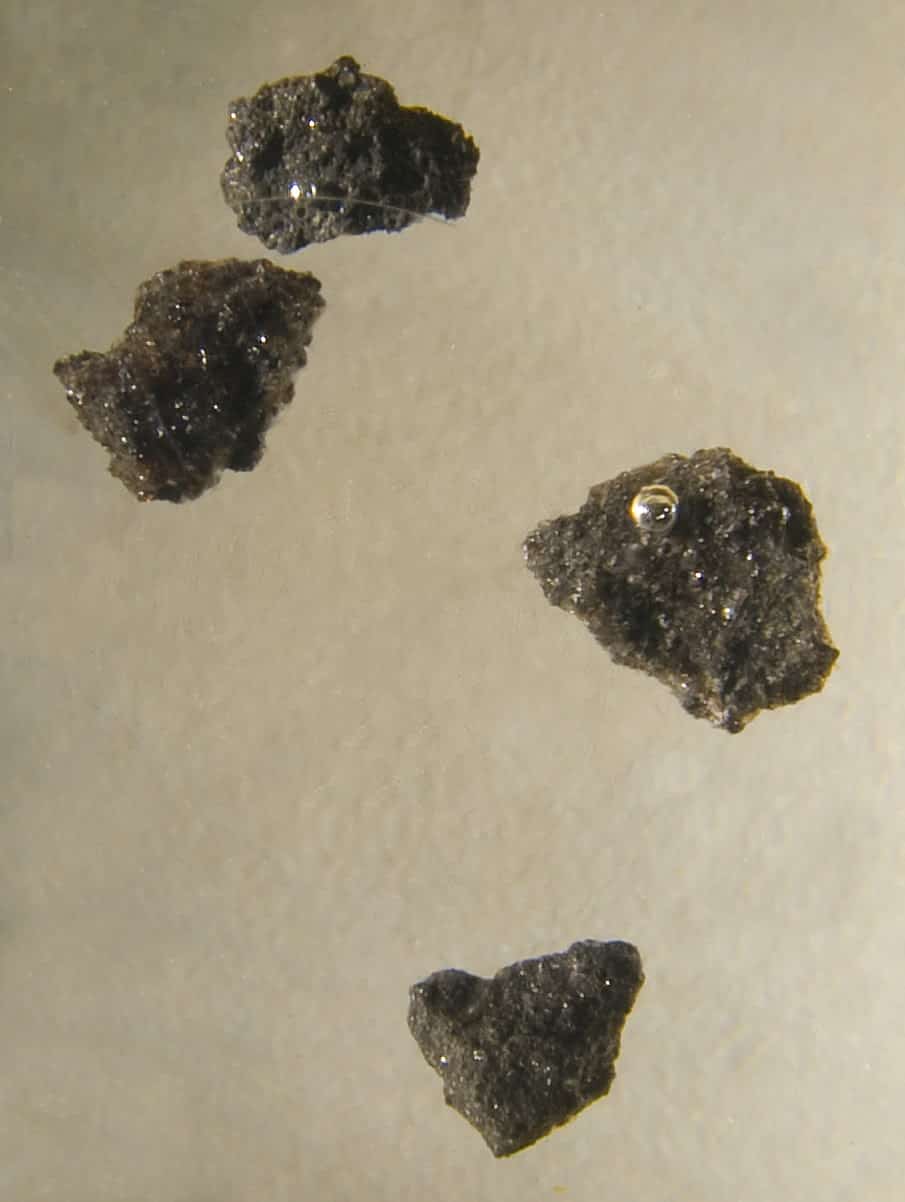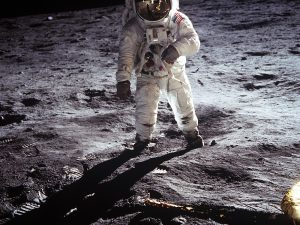Almost two years ago, SpaceX CEO Elon Musk sold the first ticket to the moon. A few months later, on January 3, 2019, a Chinese spacecraft named Chang’e 4 became the first robotic mission to land on the far side of the moon. Since then, both an Israeli ship and an Indian mission have attempted a lunar landing.
The United States and Russia have long been competing for the advantage in space technology, and now other nations have joined the so-called Space Race.
In this “Moment in U.S. Diplomatic History,” we look back to arguably the most important moment in space exploration. When Apollo 11 finally landed humans on the moon, a sense of euphoria spread across the globe. Neil Armstrong’s now famous words, “One small step for a man, one giant leap for mankind” meant that America had achieved something previously thought to be impossible.
When the Apollo 11 astronauts returned, they brought back some moon rocks as a gift for President Nixon. He, in turn, decided to give one moon rock to every head of state—135 counties in total—as a sign of goodwill. Every U.S. ambassador received one by diplomatic courier and was ordered to hand it over to the head of state. Some recipients were fascinated and others treated the moon rock like it was more precious than a diamond. But not every head of state was excited to receive this extraordinary gift.
Harvey Leifert’s interview was conducted by Mark Tauber on June 18, 2018.
Leo G. Cyr’s interview was conducted by Charles Stuart Kennedy on February 4, 1988.
Victor L. Stier’s interview was conducted by G. Lewis Schmidt on March 26, 1990.
Richard Fenton Ross’s interview was conducted by Charles Stuart Kennedy on June 19, 2003.
Read another moment about space travel HERE.
Drafted by Ianthe Van Dyck
ADST relies on the generous support of our members and readers like you. Please support our efforts to continue capturing, preserving, and sharing the experiences of America’s diplomats.
Excerpts:
Harvey Leifert
Port-au-Prince, Haiti—Cultural Affairs Officer (USIA)
Read Harvey Leifert’s full oral history HERE.
“Duvalier was fascinated by the moon rock. He looked at it. I have a photo of him, gazing intently through the Lucite cover over the presentation case.”

A Moon Pebble for the President: François (Papa Doc) Duvalier was a fascinating person, whom I only met once. It was on the occasion of one of the two science related activities I did during my entire career. It was presenting him with a moon rock. President Nixon decreed that every head of state would get a moon rock, and they were quite small, moon pebbles really. But, they were put into a nice display case, and every ambassador got one by actual diplomatic courier to give to his or her head of state. And, the ambassador, Clinton Knox, kindly asked me if I’d like to go along with him to the presidential palace … to give it to Duvalier. And, I said, yes.
A Black or a White Suit: They had a funny system … in Haiti when there was any kind of serious event: you were told it was either black suit or white suit, and you’re expected to have both. Well, I didn’t have a white suit, which is what was specified for this event. I did have a black one, or one that was dark enough to pass, but I was also told that if you didn’t have the appropriate color, you could safely use the other one. So, I did and went through in my black suit. The ambassador, Papa Doc, and his aide de camp were all in their white suits, and Duvalier was fascinated by the moon rock. He looked at it. I have a photo of him, gazing intently through the Lucite cover over the presentation case. And, he asked questions. He was an actual doctor of medicine and therefore had some scientific background. It was a very nice ceremony, and ultimately I shook hands with him. I have a photo of that, too, which I can’t believe: you know, I actually shook hands with Papa Doc.
__
Leo G. Cyr
Kigali, Rwanda—Ambassador
Read Leo G. Cyr’s full oral history HERE.
“My hunch is that they viewed the rock with superstition, particularly Kayibanda. It was the type of thing that could happen only in Rwanda.”
The Problem of the Moon Rock:
Q: I was asked by Ambassador Corrigan to ask you about how you dealt with the problem of the moon rock. Does this ring a bell with you?
CYR: Oh, yes.
Q: He was saying that they were having trouble delivering a piece of the moon which had been sent up with the Rwandan flag, and that you had tried to deliver it, and nobody was interested in this.
CYR: So, apparently nothing happened after my departure? It was weird, absolutely weird. My hunch is that they viewed the rock with superstition, particularly Kayibanda. It was the type of thing that could happen only in Rwanda.
Q: Corrigan said that we had taken on one of our voyages to the moon some flags and delivered them back to all the countries, each with a little piece of moon rock, which was usually put on exhibit in the countries. But Rwanda just had absolutely no interest in this, you couldn’t deliver it.
CYR: Yes, we received a circular instruction for the Department on what Bob described, asking that we deliver the flag and the moon rock to the Rwandans. I don’t recall the scenario very exactly, only that it unfolded over a period of time. As I remember what happened, I probably spoke to Kayibanda first, saying I would like to deliver the flag and moon rock to him. He suggested I contact the Foreign Minister. I spoke to the Foreign Minister, who was evasive. He would be in touch. Time went by and the Department may have asked for a report. I checked with the Foreign Minister several times and continued to get the run-around. My tour of duty came to an end. Some ambassadors leave their successors aid projects to finish. In Rwanda, we leave them moon rocks! I must ask Bob what he ever did with the moon rock.
__
Victor L. Stier
Ceylon, Sri Lanka—Country Public Affairs Officer (USIA)
Read Victor L. Stier’s full oral history HERE.
“Some Buddhists told us they couldn’t believe it—man cannot be on the moon. Some actually accused us of cheating, of faking the moon landing.”
Man Cannot Be on the Moon: On the other hand, we went to the moon and brought back a rock, brought it to a Buddhist country, and the ambassador, Andrew V. Corry, that marvelous underrated American diplomat, what a splendid fellow he was, had a party at his residence which we put on for him and for hundreds and hundreds of people we showed that landing on the moon. And some Buddhists told us they couldn’t believe it—man cannot be on the moon. Some actually accused us of cheating, of faking the moon landing.
__
Richard Fenton Ross
Calcutta, India—Audio-Visual Officer (USIA)
Read Richard Fenton Ross’s full oral history HERE.
“It really was magic!”

The Moon Rock Is Coming: One of the things we had is, when they finally got to the moon, they brought a moon rock back. They brought lots of moon rocks back, and you know, the first person who got one was the president. I guess Nixon had come in then. Then they put the tiny little pieces of moon rock in Lucite. Everybody’s seen one, I suppose. They had big chunks of them lying around; in fact, some of them have been stolen, and they’re in secret collections now.
But anyway, we had big, heads-up warning that a moon rock was gonna come to India. They had security like if it was Einstein or something like that, not the president, not POTUS, but they had all kinds of… They had a special Halliburton case, and inside it was another case that was lined with velvet, and it was like … the tongue of Saint Vincent de Paul, and the next time you go to Padua, Italy, there it is. It’s all encased in chryselephantine. So the moon rock came; first it was shown to Indira Gandhi and people up in the capital, and then, of course, everybody had to make a plan. So I made a plan: we rented some circus tents and got space on the Maidan, and we put big ads in the newspaper, “The moon rock is coming!” We realized this was a crazy thing.
Like the Hope Diamond:… I mean the thing it was in was no bigger than the head of this microphone. But then it was encased in this thing, like Harry Winston set it up like the Hope Diamond. And it was treated like that! They developed an argument in the newspaper. The Statesman had a correspondence; some of the people of a rather primitive, estimable religious belief said, “It’s impossible! No one could have a moon rock because, you know, our God has told us nobody can go to the moon!” and things like that. And then other people had to answer that, and they got in the usual squabbles and stuff, and “Why are they giving land on the Maidan for this moon rock thing?”
Anyway, the great day came. I was in charge. We had private showings of it in the consul general’s garden, and he had one, and everybody wanted to [touch it]. You couldn’t touch the thing; you could only touch the Lucite around it or whatever kind of plastic it was, but you could look at it. And you could say, “Wow!” And it really was magic!


